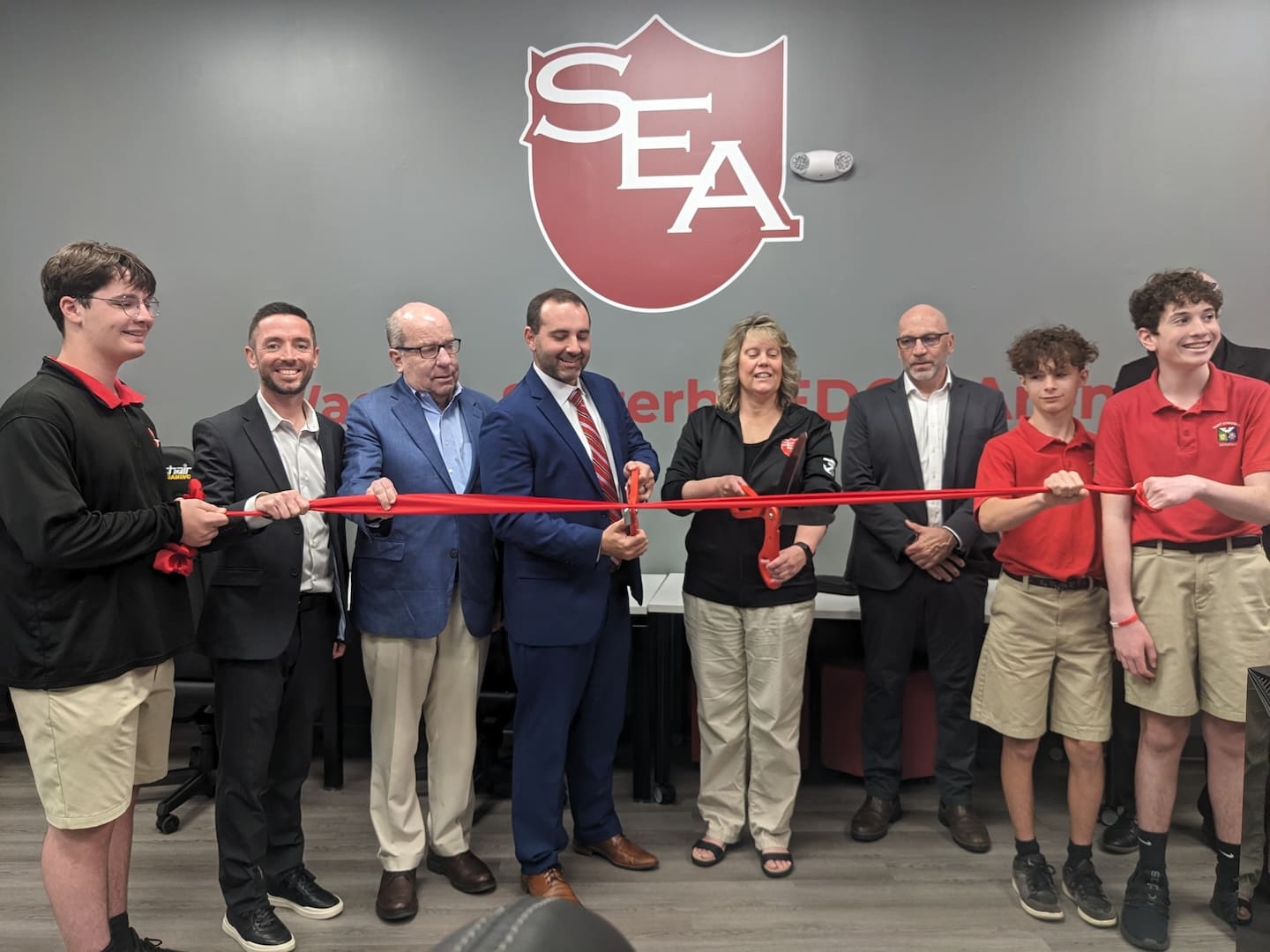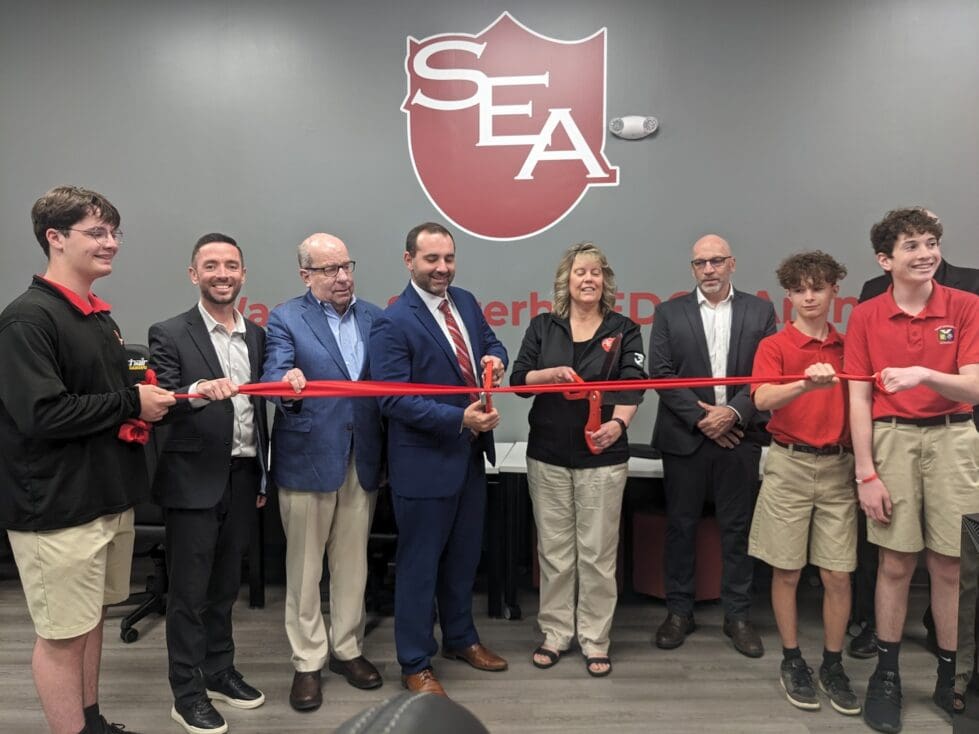
Domenic J. Maiorano, St. Edmond’s head of school , and benefactor Kathleen Wagner-Szczerba hold the scissors at the ribbon cutting for the new Wagner-Szczerba EDGE Arena. Ken Mammarella photo.
A hamster feeder, a bed ejector and a system that uses a gyroscope and LEDs that turn bubble gum pink to warn a biker that’s he riding riskily were some of the interesting STEM inventions shown off Friday by students at St. Edmond’s Academy.
The fair was part of a program to dedicate the new Wagner-Szczerba EDGE Arena, which the Brandywine Hundred school called “a state-of-the art engineering, design and gaming [experience] facility designed to give students a hand-on, practical learning experience as they sharpen their STEM skills.”
And it all came about because of a friendship between veteran educator Kathleen Wagner-Szczerba and Domenic J. Maiorano, head of school.
“I said ‘Do something cool,’” said Wagner-Szczerba, an educator for 35 years and supporter of the school. “And Domenic said ‘We’ll be innovative and inspirational.’ ” She also asked for something that would “set the academy apart from its peers.”
The school, which serves about 165 boys from kindergarten to eighth grade, converted a traditional classroom into the arena, with seating and computers for about a dozen students. The arena – with the name evoking spaces used for e-sports competitions – opened in the fall and is named after Wagner-Szczerba, in honor of her generosity.
Science, technology, engineering and mathematics is already an important part of the curriculum, said Sam Fella, the student council president, noting that he has STEM classes four days a week. Fella’s capstone project was a door lock that could be opened by a fingerprint reader, inspired by the father of classmate E.J. Viera.
The dedication of the arena included the blessing a few symbolic objects – a small computer called a Raspberry Pi, a robot and a video game controller – during a gathering in the school’s fieldhouse. The classroom received its blessing a few minutes later.
In the arena, the school said that students are learning coding, design and electrical and mechanical engineering through core curriculum and cross-curricular opportunities in data analytics, entrepreneurship and robotics.
“This will impact every student here, K-to-8. It looks different based on the age,” Reichert told The Dialog last year. “All students upon graduation will learn how to code.”
St. Edmond’s students show off creations
The bed ejector was by Nicolas Ford and Jakeen Turner. They designed and built a smart bed frame, with a programmable alarm clock that, through its noise, activates a hydraulic lift to launch sleepyheads out of bed in the morning.
Riley Brown and Quin Duncan attached LED lights to a gyroscope sensor to indicate when a dirt bike is at risk of over-rotating and potentially injuring a rider. Alas, they couldn’t bring a dirt bike into the fieldhouse and demonstrated it with a mountain bike.
The automated hamster feeder came from Viggo Hohman and August Abessino, inspired by August’s concerns about forgetting to feed his hamster, Wilbur.
For their projects, the students also produced folders that set up their problem, showed off their thinking about solutions and broke down their costs.
“Boys at this age thrive when learning is authentic, inquiry-based, related to their lived experiences and technology-based,” principal Michael Reichert said. “This facility has absolutely helped our students tap into new areas that interest them, gain exposure to meaningful skills and find and develop their passion.”
Maiorano said that the academy is seeking partners in robotics, engineering, coding and design to expose students to STEM-related occupations. “This is what young people face as they move forward into the work environment,” he said. It’s also “the next chapter of what education looks like.”
some info
Share this Post




